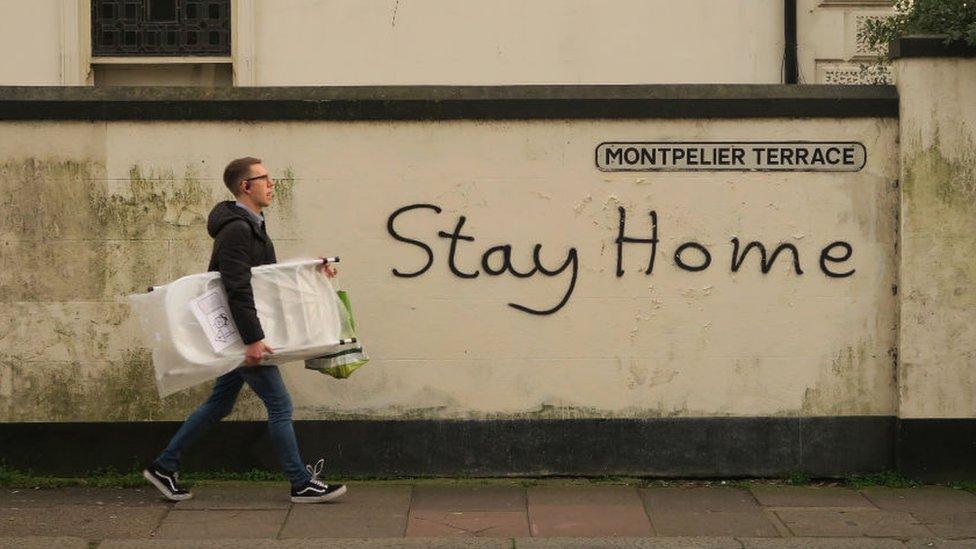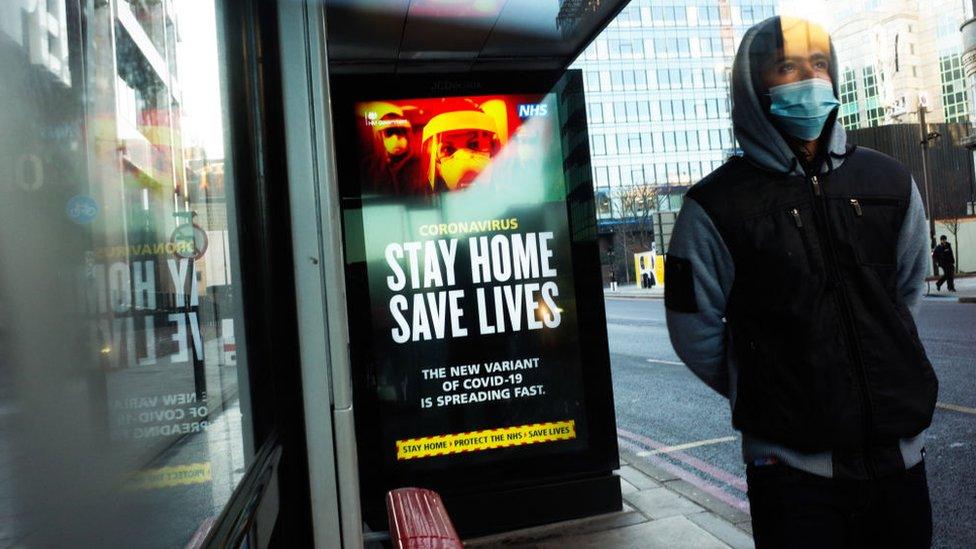Covid: How many people get self-isolation payments?
- Published

About two-thirds of people in England and Wales trying to access the £500 self-isolation support payment are being rejected, according to figures obtained by BBC Reality Check.
The government announced the payment in September, external, saying it would "ensure that those on low incomes are able to self-isolate without worry about their finances".
It estimated just under 4 million people would be eligible.
The government's scientific advisors, Sage, have warned repeatedly that concerns over money could lead to people breaking the rules on self-isolation.
So, why are so many being rejected?
How does the scheme work?
If a person tests positive for coronavirus or is asked to self-isolate for another reason, they can apply for a £500 support payment in England and Wales, via one of the scheme's two funds.
People should apply online and must provide evidence they meet the eligibility criteria., external
The main fund is available for people who are unable to work from home and are receiving a form of benefits.
The discretionary fund is available for those not receiving benefits but who will suffer financially by self-isolating.
The scheme is administered by local councils, not by central government - although it provides the funding.
How many receive the payment?
Data on the payments is not publicly available so we contacted councils under the Freedom of Information Act.
We contacted 337 councils, of which 271 replied and provided figures. They show:
Between 28 September and 15 January, 212,000 people requested the £500 payment in England and 74,400 were successful.
Between 12 November and 15 January, 15,000 applied in Wales and 5,400 received the payment. Their scheme was set up a month after the one in England.
So about two thirds of people who had applied had been unsuccessful.

Between 1 October and 15 January, about 6.4 million people in England were reached by contact tracers and told to self-isolate.
This means that we can estimate about 1.5% of people told to self-isolate in England received the payment.
But there are limitations with this estimate, including the fact that the government doesn't release data on people told to self-isolate through the NHS Test and Trace app.
Why are so many being rejected?
We asked councils the reason for rejecting applicants to the scheme.
The reason that roughly a third of people were rejected was because of problems with their applications.
This included not providing enough evidence, duplicate applications, applying too late or not engaging with the test-and-trace scheme.

The rest of the rejected applications were due to people not meeting the eligibility criteria for the scheme in the first place.
"The high rejection rates for the self-isolation scheme reveal a system that's too patchy, too strict, and is riddled with problems that were inevitable when the government rushed out a new, underfunded scheme," says Alex Collinson, a research officer at the Trade Unions Congress, which represents 5.5 million union members across England and Wales.
He says that the scheme was initially underfunded meaning some councils were cautious with delivering discretionary payments.
A handful of councils told us that funding issues had meant they couldn't approve some applicants.
"In some areas, demand on councils for additional support has outweighed funding available," a spokesperson from the Local Government Association, a body which represents local authorities, said.
In general though, the councils we contacted noted that the eligibility criteria prevented them from issuing payments.
"There are many people who are not on benefits, but who would struggle to lose two weeks' income because of their household commitments," says Martin Gannon, leader of Gateshead Council, where just 10% of people's applications were approved.
"These people also need the help but can't get it."

The Local Government Association is positive about some of the changes that have been adopted in recent weeks.
Firstly, parents who are staying at home to look after children who are self-isolating (and who meet the financial thresholds) can now access the scheme.
Secondly, the scheme has been extended until at least June and the amount of funding available is increasing from £50m to £110m.
The Department for Health and Social Care has said it will continue to work with and listen to feedback from councils in the future.
They also point out that a weekly sick payment of £95.85 is available for most employees, however most self-employed people are not covered by this.
Does money impact self-isolation?
Currently, people who have symptoms of coronavirus should stay at home for 10 days. It is against the law to leave home if you have tested positive or been told to self-isolate by test-and-trace.
Most estimates suggest the majority do not do this. Research referenced by Sage shows that between 15-30% of people actually, external follow the rules for the whole period.
It is difficult to pin-point the exact reasons people do not follow these rules as we rely on surveys for this information.
In February, Baroness Dido Harding, who runs the test and trace programme, highlighted four reasons for people, external not self-isolating:
Misunderstanding the rules
Practical issues, such as needing to get food
Mental health issues
Financial difficulties
"They find it very difficult, and the need to keep earning and to be able to feed your family is a fundamental element of that," she told MPs last November, external.
On financial difficulties, Sage has referenced research that shows, external willingness to self-isolate was three times lower among less affluent people.


